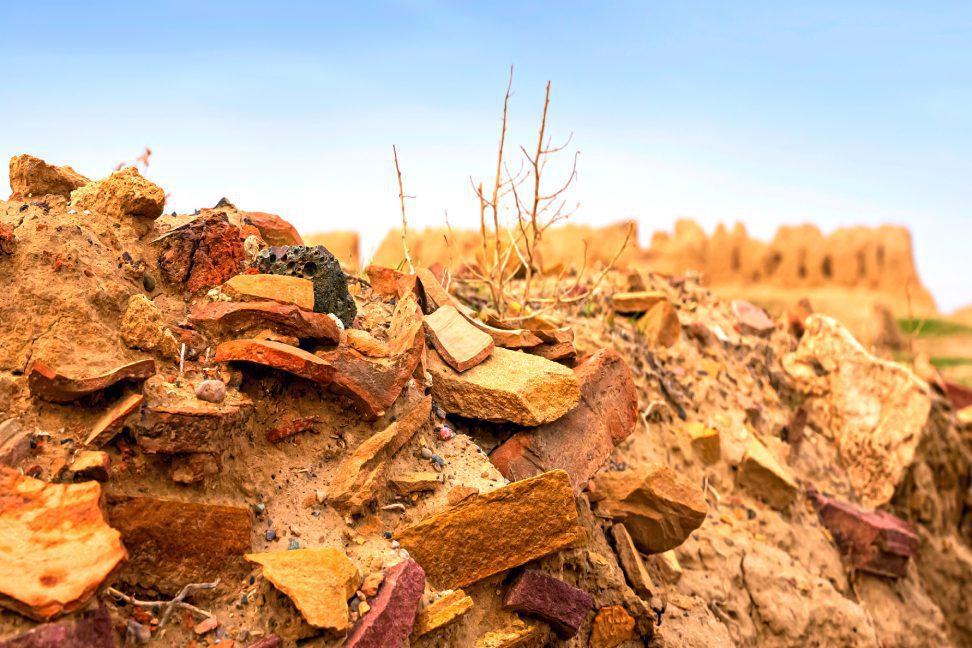In my private tours in Israel, I am asked how do archaeologists date remains they find? When archaeologists dig in a biblical Tel how do they know when a structure was built; or how long people lived there and eventually abandoned? In fact, there are all kinds of methods to help archaeologists date the specific layer they reached in archaeological tel. For example, there is Carbon 14 dating; coins; inscriptions; ancient historical sources, and pottery (ceramic) typology.

How Do Archaeologists Date Archaeological Remains? Carbon 14 Dating
This way of dating archaeological finds is the only “scientific” method here. In other words that you sent it to a lab and they come back with a date. Carbon 14 is a radioactive isotope of Carbon 12. All plants and living creatures contain Carbon 14 while they are still living. When a living thing dies, it begins to lose Carbon 14 at a steady rate.

The problem is that this method is good only for organic materials. Another disadvantage is that the results come back with a plus-minus range of 100 years either way. For these reasons, Carbon 14 dating is useful when there are no other methods of dating for example in a prehistoric site or when objects do not have any stratigraphic context.
How Do Archaeologists Date Archaeological Remains: Coins
Coins are great in helping an archaeologist date stuff since coins usually carry their own date. But there are also some disarranges in coins as well. For example, at the excavations at Masada they found coins dated to the Hasmonean Period even though the very first structures were dated later; to the time of Herod the Great.

(Credit: Dr. Gary Lee Todd)
So the fact that we found coins dating earlier to the Herodian Period means we can date the site to an earlier period than the structure? No! Coins in antiquity often remained in circulation for long periods. Sometimes for hundreds of years after they minted. So finding a coin that was minted in 90 BCE on the floor of a building can be misleading if the coin fell onto the floor 80 years later in the year 10 BCE.

In short, it is best to use more than one coin when possible or coins plus other methods of dating to obtain an accurate date. Another disadvantage with coins as a dating method is that coinage was not invented in the Mediterranean world until only 600 BCE. And once these people were beginning to use them they did not have the tendency to leave them lying around. Only because they were so valuable. Also when an archaeologist finds a coin sometimes it is impossible to read the date. This is especially true if the coins are made from bronze. This means you can excavate and sometimes not find any coins at all.
How Do Archaeologists Date Archaeological Remains: Inscriptions
Finding inscriptions or other written materials in excavations can help enormously to date an archaeological site. Inscriptions use a certain script. Also, language evolves over the centuries or sometimes changes altogether when a new civilization invades a region and settles in.

(Credit: Dr. Gary Lee Todd)
How Do Archaeologists Date Archaeological Remains: Ancient Historical Sources
These can be quite helpful for dating when they are available. For example in Qumran’s excavations under de Vaux, he found that the site was destroyed due to a major earthquake. He was able to date this event to 31 BCE because Josephus Flavius mentions that a strong earthquake affected the Jericho region during that year.

How Do Archaeologists Date Archaeological Remains: Pottery
In archaeological digs, pottery is found in great amounts. Even though pottery is not carrying its own date you can use it for dating. How do archaeologists do it? So what they do is to try and establish a sequence. From the earliest type of pottery that they found at the very bottom of the archaeological mound. All the way the recent ones dated to later periods. In this fashion, they can establish what is called a relative sequence. Even though that by itself cannot establish an exact date. Alongside other finds like coins, it can produce a date.

For example, let’s say we found a coin dated to the time of Augustus. Next to the coin, we found a broken red bowl with some decorations. Easily we can date this to the 1st century CE. Now once we will dig in a nearby site and again we found the same bowl but no coin next to it. We can deduce according to what we found elsewhere that it dated to the 1st century CE.

